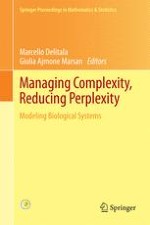
2014 | OriginalPaper | Buchkapitel
Mathematical Ecology of Cancer
verfasst von : Thomas Hillen, Mark A. Lewis
Erschienen in: Managing Complexity, Reducing Perplexity
Aktivieren Sie unsere intelligente Suche, um passende Fachinhalte oder Patente zu finden.
Wählen Sie Textabschnitte aus um mit Künstlicher Intelligenz passenden Patente zu finden. powered by
Markieren Sie Textabschnitte, um KI-gestützt weitere passende Inhalte zu finden. powered by